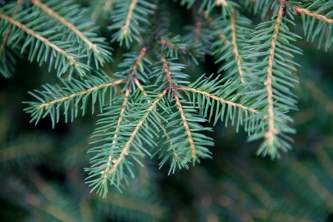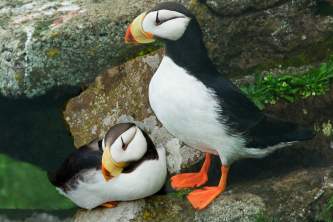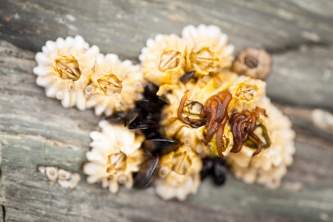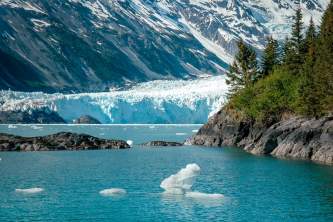Tundra
By Elise Lockton
Where Did All the Tress Go?
The tundra is one of Alaska’s coolest places, literally! If you were in the Rocky Mountains you would be huffing and puffing climbing to 11,000-12,000’ to get above tree-line but here in Alaska because of our higher latitude the tundra is more accessible. What do the Rocky Mountains and Alaskan latitudes have in common? You guessed it, while there are different variables that define where the trees end and the tundra begins a mean July temperature of 50 degrees is one of the big factors in defining tree-line. In Colorado that 50-degree mark sits at around 11,000’ but in the higher latitudes of Alaska, tree-line sits quite a bit lower in elevation. So, no need to commit to climbing a fourteener in Alaska as the tundra here is a lot easier to access. On the Kenai Peninsula or in the Chugach Mountains outside Anchorage you can climb an hour in the beautiful mountains to access the tundra. Another great experience is a drive or hike in Denali where you experience the tundra at 2000-3000’.
Large Mammals of the Tundra
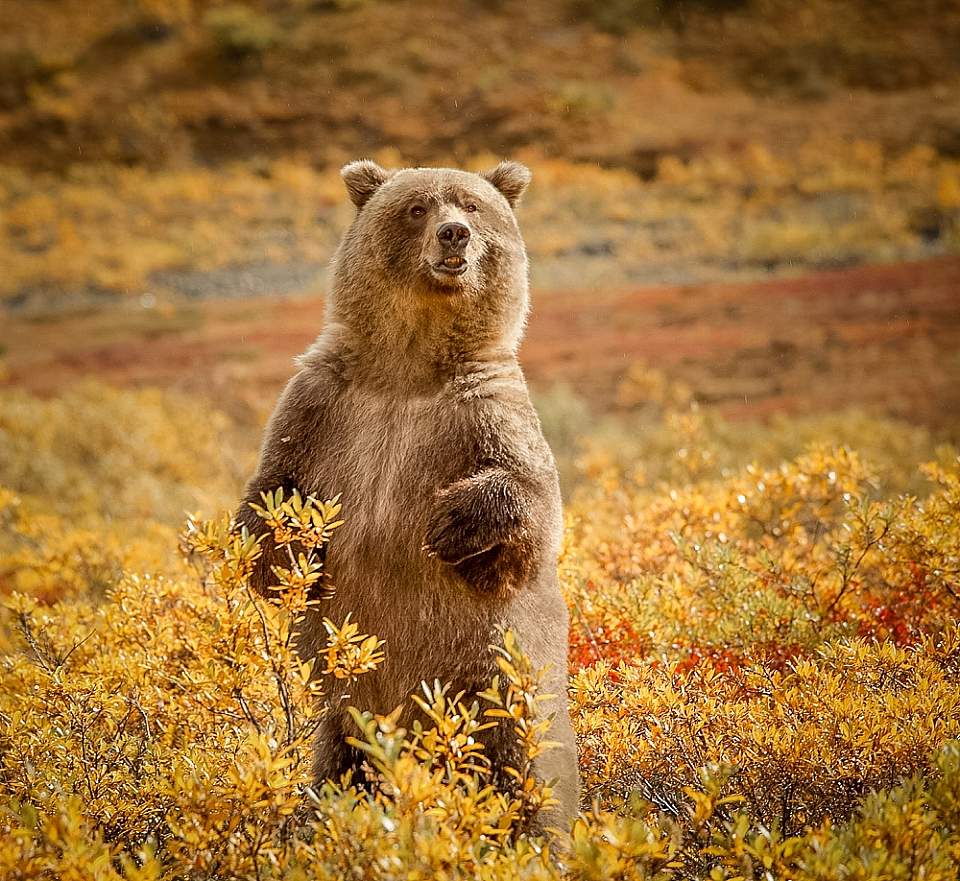
Brown Bear. Photo credit: Tundra Wilderness Tours
Without trees to obstruct your view the perspective is immense and wildlife viewing is easier. When taking a break from your hike or tundra nap it’s good to scan the wide-open landscape for movement of critters, such as: black and brown bear, moose, caribou, Dall sheep, wolf, lynx and the elusive wolverine.
Hey Bear!
In Alaska we have three species of bear: polar, black and brown. Chances are, unless you are on the north slope of Alaska you will not see a polar bear. Black bears have a straight face and tall pointed ears. Black bears typically occupy forests and wooded mountains. Brown bears and grizzly bears are one in the same. Brown bears live along the coast and grizzlies live more in land. Grizzlies can be identified by a distinctive hump on their back and a dished face profile. In Denali there are no salmon streams like there are on the coast so the bears eat roots, grasses, berries and squirrels if they can get them. The biggest grizzly in the park weighs around 500 pounds vs the coastal bears can weigh over 1000 pounds. One of the best signs to search for is their scat on the trail. Can you tell what they have been eating? Whether you are exploring the tundra above Anchorage the Kenai or Denali always scan for bears.
Did Rudolph the red nosed reindeer really have a rack?
Caribou are the only member of the deer family where both sexes have antlers. Males lose their towering antlers after the mating season but the females retain their smaller antlers through the winter. The female uses her antlers to defend patches of lichen from other caribou and loses them in the early spring. If you stop and think about the lead reindeer "Rudolph” HE didn’t have antlers during Christmas so Rudolph is actually a female. See if you tell the difference between male and female by the size of their racks? Denali National Park is a great place to look for caribou.
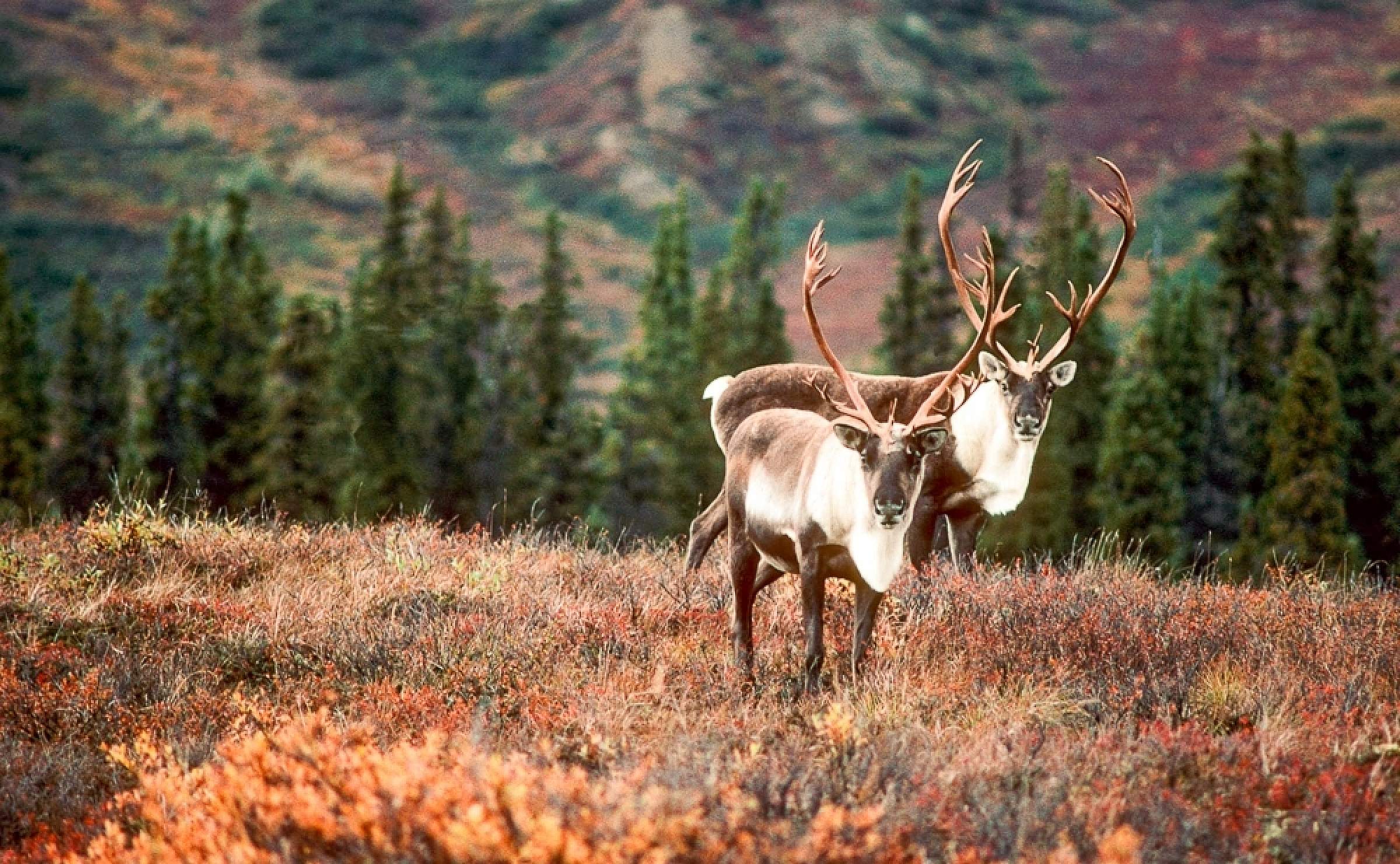
Caribou
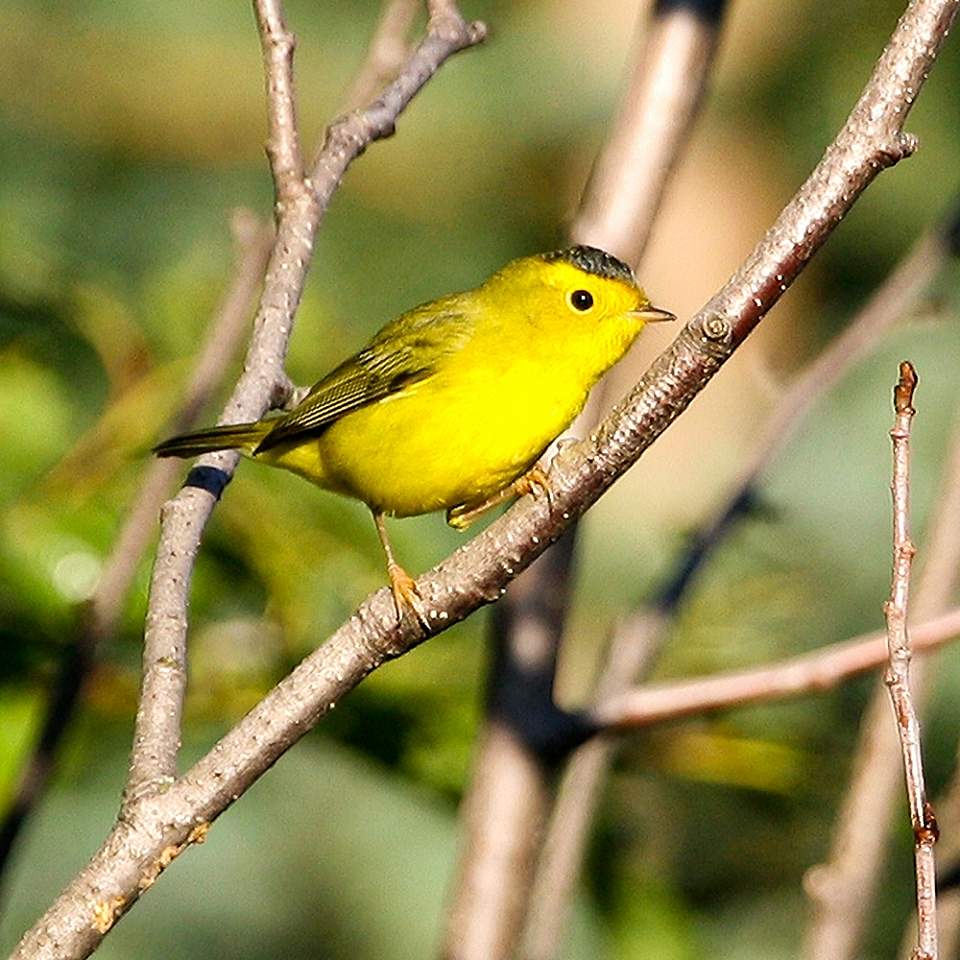
Wilson's Warbler. Photo credit: Donna Dewhurst
Identifying Birds
For those with an eye and ear for birds, the tundra is a rewarding place to look for some of the 150+ species that migrate to Alaska to breed. If you are visiting a park or town stop at the visitor center and ask for a bird checklist to take with you on your outing and see how many species are present, familiar and how many you can tick off the list. If you don’t have a bird book with you download one of the many bird apps to take on the tundra or take visual notes on size, color and pattern and try to identify them when the day is done.
Songbirds To Look For
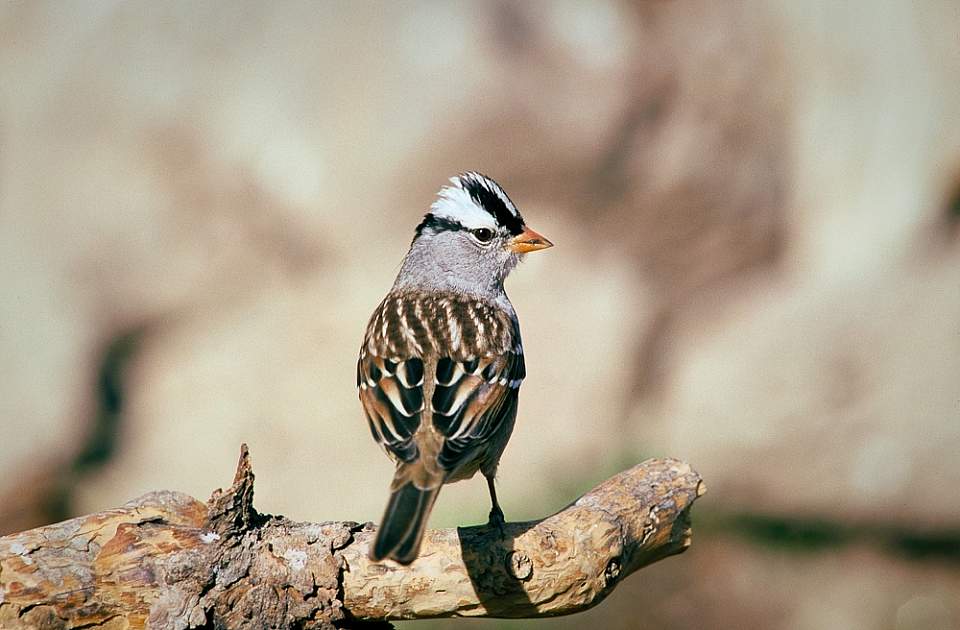
White Crowned Sparrow
One of the more common birds in the tundra is the white crowned sparrow. Look for a bird on the top of bushes with bold black and white stripes on its head. As you take pause listen for its sweet song that has a whistling introduction followed by a succession of jumbled whistles, and a buzz near the end. This song is one of the most studied sounds in animal behavior and is a song the males learn not directly from their parents, but rather from the song environment of the neighborhood they grow up in.
As you are walking through the willow and alder thickets you may catch a glimpse of the striking little Wilson’s warbler. As you scan the vegetation look for a yellow bird that seems to dance around the vegetation grabbing insects as it goes. If they appear larger than other Wilson’s warblers you have seen along the East or Pacific coasts it’s because in fact the warblers that migrate to Alaska are larger than their counterparts. As the saying goes “everything is bigger in Alaska” right down to the songbirds.
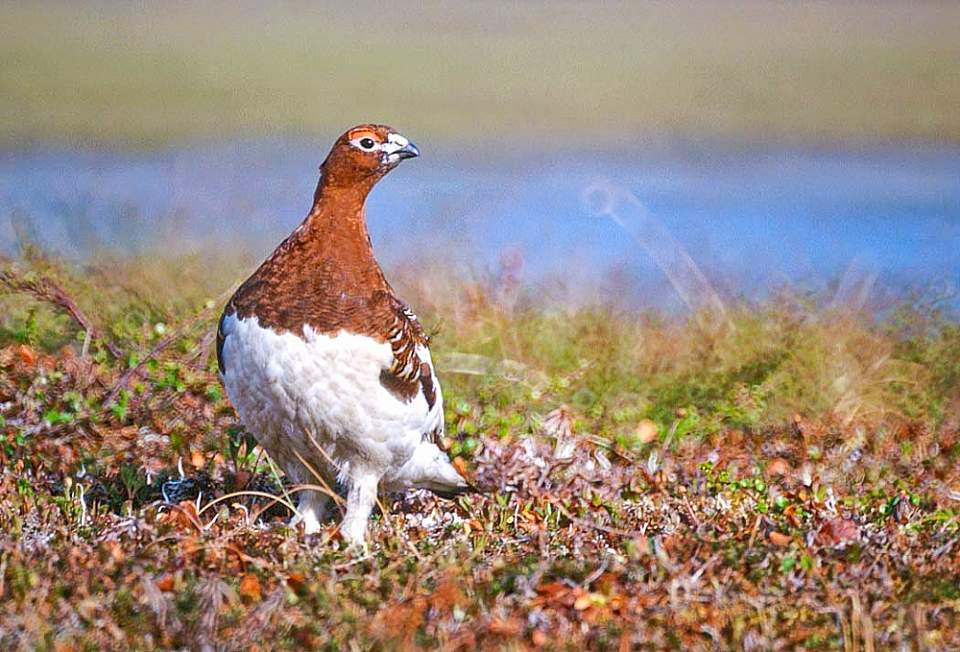
Willow Ptarmigan. Photo credit: Tim Bowman
What's the state bird?
A trip to Alaska would not be complete without seeing a ptarmigan. As you are walking through the willow bushes and flush a brown and white, plump chicken-like bird it is more than likely a willow ptarmigan. The ptarmigan is one of our few year-round residents. In the winter they turn white to blend in with the snowy landscape and protect them from ravens, golden eagles, wolves, foxes, etc. The changing of color is controlled by the amount of daylight. As days get shorter in fall, a ptarmigan’s eye receive light for shorter and shorter periods. This decrease in day length stimulates the pituitary gland, located at the base of the brain. During molt, the pituitary gland shuts off the production of feathers with color, and instead the new feather grows in white. Like the tough Alaskans who endure the long, cold winters it only seems appropriate that the willow ptarmigan represent the Great Land as the state bird. Look for these birds as you head towards the tundra above Byers Lake in Denali State Park.
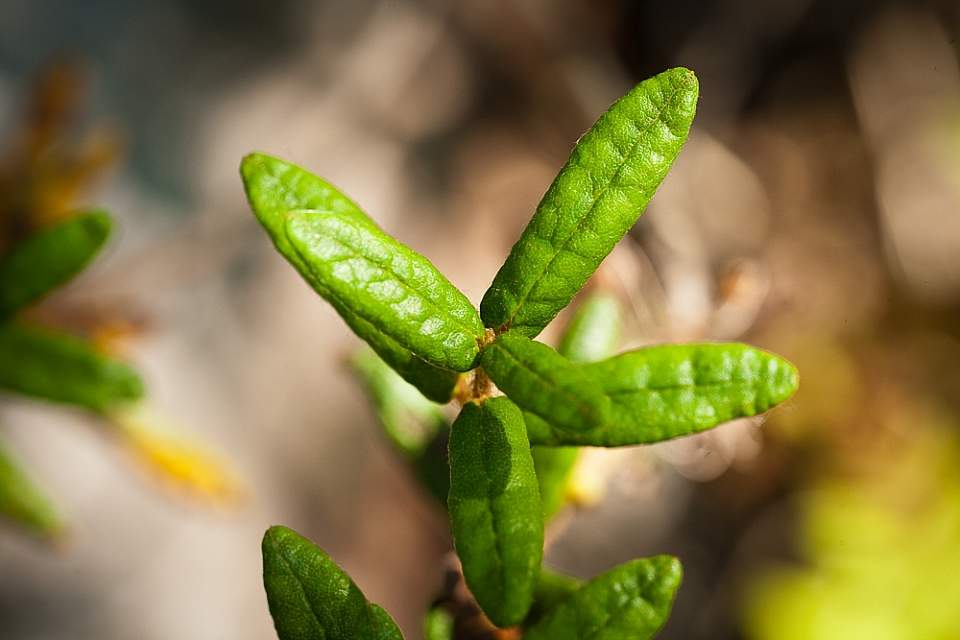
Labrador Tea
Belly Botany
Another favorite pastime in the tundra is belly botany and exploring the incredibly diverse array of wildflowers. Pick up a local plant book, make sure your camera batteries are charged, put your camera on macro setting and prepare yourself forgetting down on all fours.
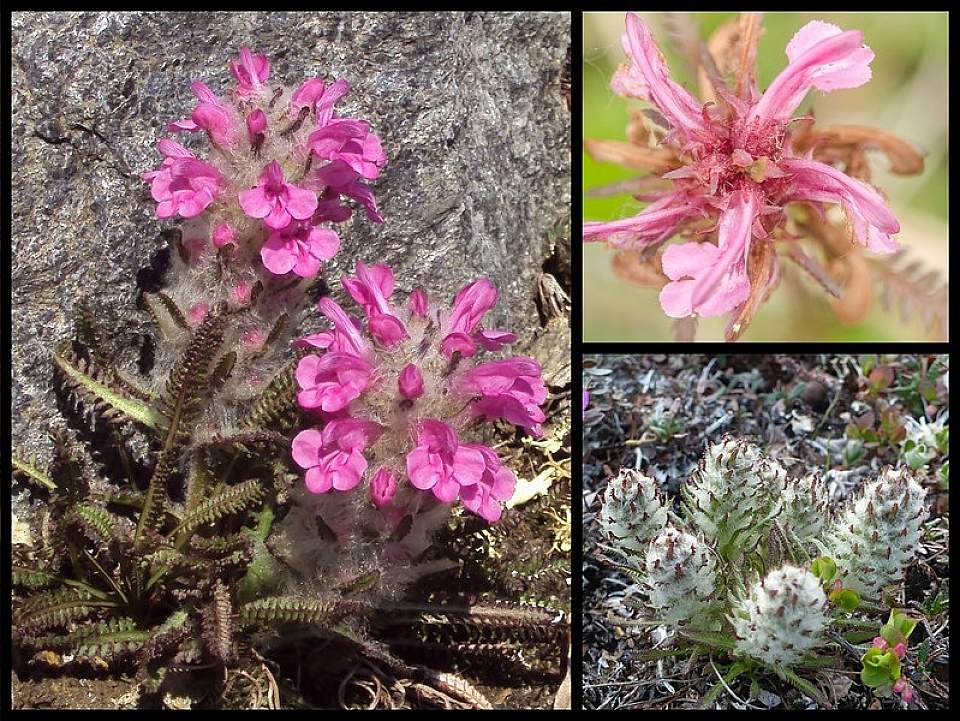
Wooly Lousewort. Photo credit: Bering Land Bridge Nat'l Preserve - Flickr
The Tundra In Bloom
One of the dominant plants that covers the tundra is Labrador tea. Often you can smell this plant before you see its blossom, a cluster of 10-40 white flowers toward the tip of the stem. Grab a leaf and look closely on the underside and you will find it covered with thick orange hairs. Now rub the leaf between two fingers and you will smell the source of the pungent scent that fills the air.
One of the more colorful flowers are the louseworts. If you see a pink flower 6” tall with a furry coat in the early summer chances are you are looking at a wooly lousewort. Feel the fluff and see if you see its emerging pink flowers. The "wool”, is a layer of insulation, which protects the plant from the wind and cold. As warmer weather arrives, the flowers break through the wool, painting the land scape with its varying shades of pink. Native Alaskans pick and ferment the whole plant, like sauerkraut.
Bountiful Berries
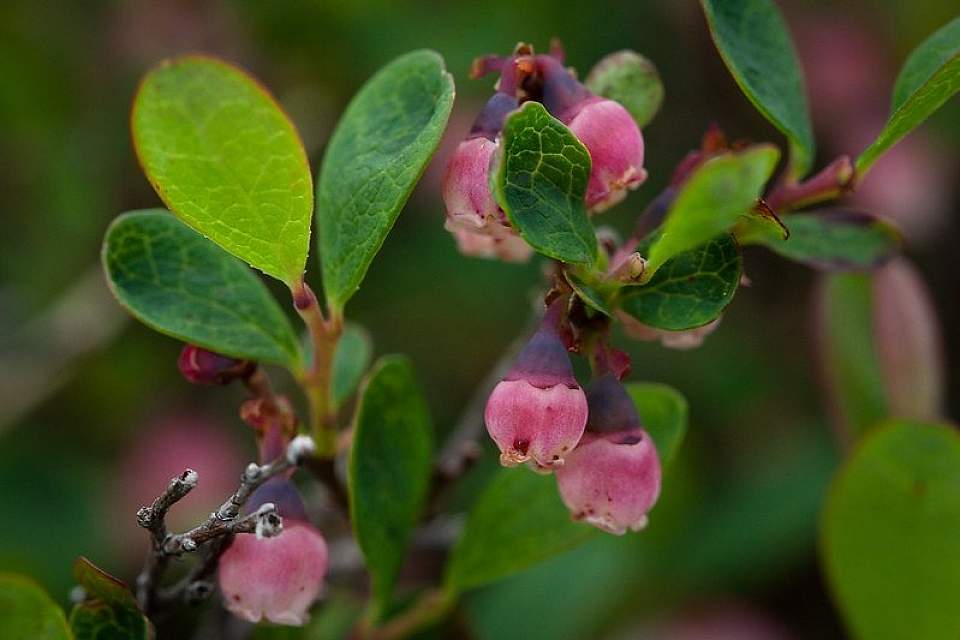
Bog Blueberry. Photo credit: Sandy Brown Jensen - Flickr
If your timing is right you will be rewarded with a bounty of berries. The bog blueberry is the most widespread of Alaskan blueberries and is everybody’s favorite for instant consumption and as a winter ingredient for muffins, pies, jams, etc. Look for a low shrub, 6”-16” high with an unmistakable and irresistible blue berry. How does that taste?
Another locals favorite is the tart red berry of the lowbush cranberry. Look for a low-lying plant that has glossy, leathery leaves with leaf margins that roll in towards the underside and small red berries. If you are hiking before berry season both blueberry and cranberry have sweet little pink bell shaped flowers. Like the blueberry the cranberry is coveted by Alaskans and used extensively in food products.
The Alaskan tundra is an inspiring place that helps to fuel the soul with its inspiring scale, great hiking opportunities, nature observations and chance encounters with large mammals that make your heart race. No trip to Alaska would be complete without seeing life above tree-line.

